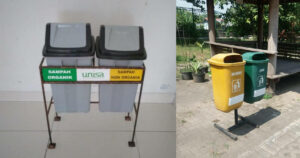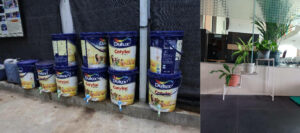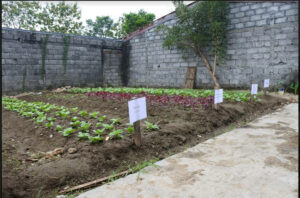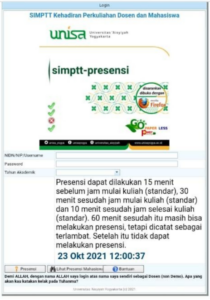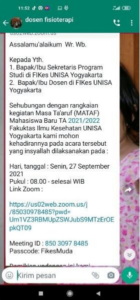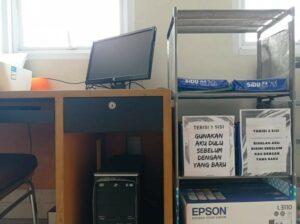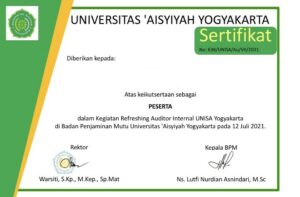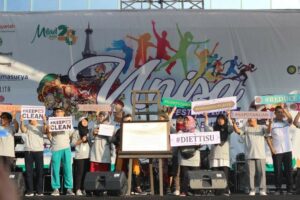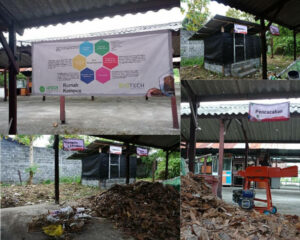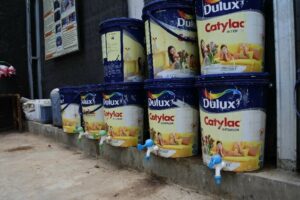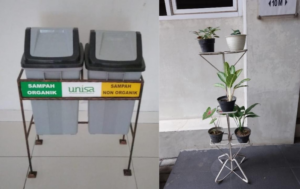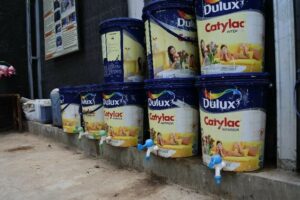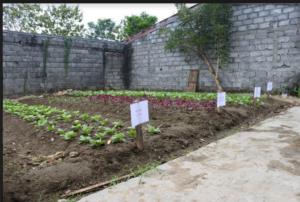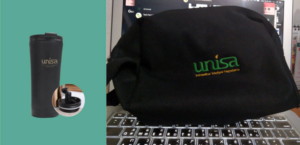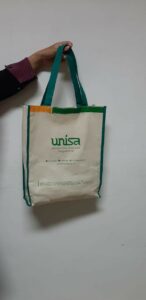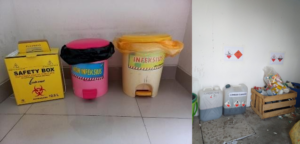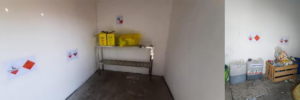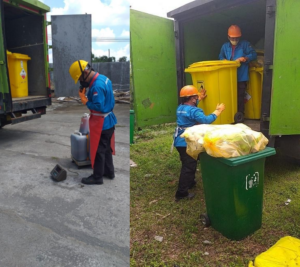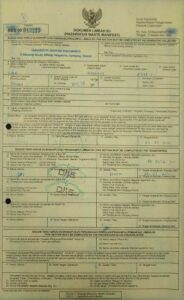Universitas 'Aisyiyah Yogyakarta
Green CampusWaste
UNISA Yogyakarta conducts a program for recycling the generated waste through sorting according to its type between organic and non-organic waste by providing trash bins both inside and outside the building
- Recycling Program for University Waste
- Program to Reduce the Use of Paper and Plastic on Campus
- Organic Waste Treatment
- Inorganic Waste Treatment
- Toxic Waste Treatment
- UNISA Yogyakarta conducts a program for recycling the generated waste through sorting according to its type between organic and non-organic waste by providing trash bins both inside and outside the building (figure 1).
- This recycling process produces non-organic waste such as plastic and iron metal reforming function as pots (figure 2). The plastic is then used to process liquid waste and produce organic fertilizer to fertilize the vegetable gardens (figure 3).
- Other waste products in the form of building waste stone and excavated soil are used to fill open areas and are processed into vegetable gardens (figure 3).
- Figure 1. Trash Cans According to the Types of Organic and Non-Organic Waste
- Figure 2. Utilization of Scrap Metal and Paint Plastic for Liquid Waste Treatment
- Figure 3. Remains of Demolition Building and Excavated Land Managed into Vegetable Gardens
UNISA YOGYAKARTA strongly supports the paperless program in daily activities; this is clear evidence to minimize the increase in tree cutting and reduce CO2 gas exposure.
- For the educational process, lecturers and students use LENSA (e-learning UNISA), which contains semester learning plans (RPS), modules, practical guides, and tutorials. Lecturers and students also optimize LENSA (https://lensa.unisayogya.ac.id/course) as a discussion forum, communication-related to assignments and lectures, assignment collection to assessment grading (figure 1)
- For attendance purposes, lecturers use a PTT SIM (https://sim.unisayogya.ac.id:8443/simptt-presensisiswa/), which includes student attendance meetings materials, and types of Surahs and Al-Quran verses that cited before starting the learning class ( figure 2).
- All academic community activities use WhatsApp, so they do not use paper as an invitation (figure 3).
- The paperless program also implements an online invitation system using social media through the Whatsapp application for all community members for any activity. However, if you need an invitation or announcement that requires a hardcopy, paper use is maximized by utilizing both sides, thus significantly reducing paper use (figure 4).
- The paperless program at UNISA Yogyakarta campus also uses e-certificates sent via e-mail to participants in seminars, training, workshops (figure 5).
- UNISA Yogyakarta also implemented the declaration of the UNISA Movement to be free of plastic waste and the zero plastic program and minimize the use of paper (figure 6).
- Figure 1. The application of E-Learning for the Learning Process
- Figure 2. The SIMPTT for presence purpose
- Figure 3. Invitations using Whatsup application
- Figure 4. Two Sides Paper utilization
- Figure 5. E- Certificate
- Figure 6. Declaration of the Plastic Waste Free Movement
- To manage organic waste, UNISA Yogyakarta provides two different trash bins for organic and non-organic waste (figure 1).
- UNISA Yogyakarta optimizes the leaf waste or dry waste function as the fertilizer in the vegetable gardens (figure 2).
- To proceed with the food waste, UNISA Yogyakarta reformed it into liquid fertilizer to fertilize hydroponic plants (figure 3).
- In addition, UNISA Yogyakarta maximized the paper used by reusing on both sides (figure 4).
- Figure 1. Trash Can by Type
- Figure 2. Leaf/Dry Waste Treatment
- Figure 3. Processing Food Waste Into Liquid Fertilizer
- Figure 4. Paper Usage Management
- For waste treatment, UNISA Yogyakarta begins with the availability of organic and non-organic waste trash bins (figure 1).
- As for the ferrous metal waste, UNISA Yogyakarta reused it for ornamental plant pots and a trash can holder (figure 1). While plastic waste such as paint buckets for processing liquid compost (figure 2).
- Other waste products in the form of building waste stone and excavated soil are used to fill open areas and are processed into vegetable gardens (figure 3).
- UNISA Yogyakarta also implemented the declaration of the UNISA Movement to be free of plastic waste and the zero plastic program by promoting the use of personal tumblers and the use of cloth bags as a substitute for plastic (figure 4).
- In addition, to reduce the number of inorganic waste, UNISA Yogyakarta releases tumblers and bags with UNISA tags for all the community in UNISA Yogyakarta (figures 5 and 6). Ultimately, the number of inorganic waste decreases dramatically.
- Figure 1. Waste Segregation and Utilization of Iron Metal Waste
- Figure 2. Utilization of Waste Plastic Paint CansFor Liquid Compost Fertilizer Processing
- Figure 3. Remains of Demolition Building and Excavated Land Managed into Vegetable Gardens
- Figure 4. Tumbler and Pockets UNISA Yogyakarta
- Figure 5. Drinking Water Center
- Figure 6. Pockets UNISA Yogyakarta
To manage toxic waste resulting from the learning process in the laboratory, UNISA Yogyakarta collaborated with a third party licensed to manage hazardous and toxic waste from the Ministry of the Environment from transportation to management procedures.
Toxic waste management include:
- Placement of waste Hazardous and toxic materials according to their type.
- Labeling the toxic by laboratory assistants according to the type of waste.
- After collecting the waste in temporary garbage, the third party collects it monthly or by appointment.
- Lastly, after the third party proceeds with the toxic waste, the manifest evidence and certificate of processing the hazardous and toxic waste are provided.
- Figure 1. Hazardous and toxic waste is placed according to its type and labeled
- Figure 2. Temporary storage of hazardous and toxic waste
- Figure 3. Transport of Hazardous and Toxic Waste
- Figure 4. Manifest Evidence and Certificate of Hazardous and Toxic Waste Treatment
